Remember when grocery shopping was an adventure that took half your Saturday? Before self-checkout machines and smartphone apps, the local supermarket was a whole different world filled with quirky details that made each trip memorable. These little touches from the 1980s grocery scene have quietly disappeared from our modern shopping experience, but they shaped an entire generation’s relationship with food and community.
1. Hand-Cranked Coffee Grinders in Every Aisle
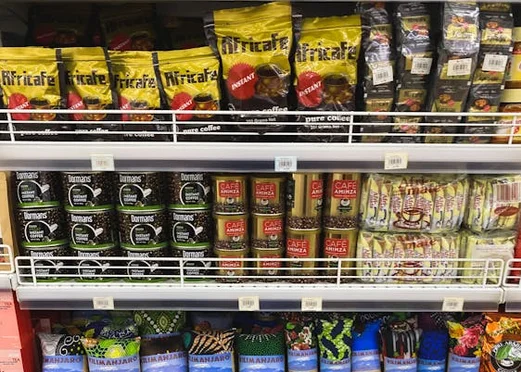
Those big, red coffee grinders weren’t just functional—they were the soundtrack of Saturday morning shopping. You’d dump your beans into the top, select your grind from coarse to fine, and listen to that satisfying mechanical whir as fresh coffee aroma filled the air. The ritual felt almost ceremonial, and there was something deeply satisfying about doing it yourself rather than buying pre-ground coffee. Even today, according to Supermarket News, stores that still had this feature are dropping it.
The machines were built like tanks and rarely broke down, unlike today’s temperamental appliances. Kids would beg their parents to let them push the button, turning coffee grinding into a family affair. These days, most people grab their coffee pre-ground or use those fancy single-serve pods, but back then, the weekly coffee grind was as much a part of grocery shopping as picking up milk and bread.
2. Actual Butchers Who Knew Your Name
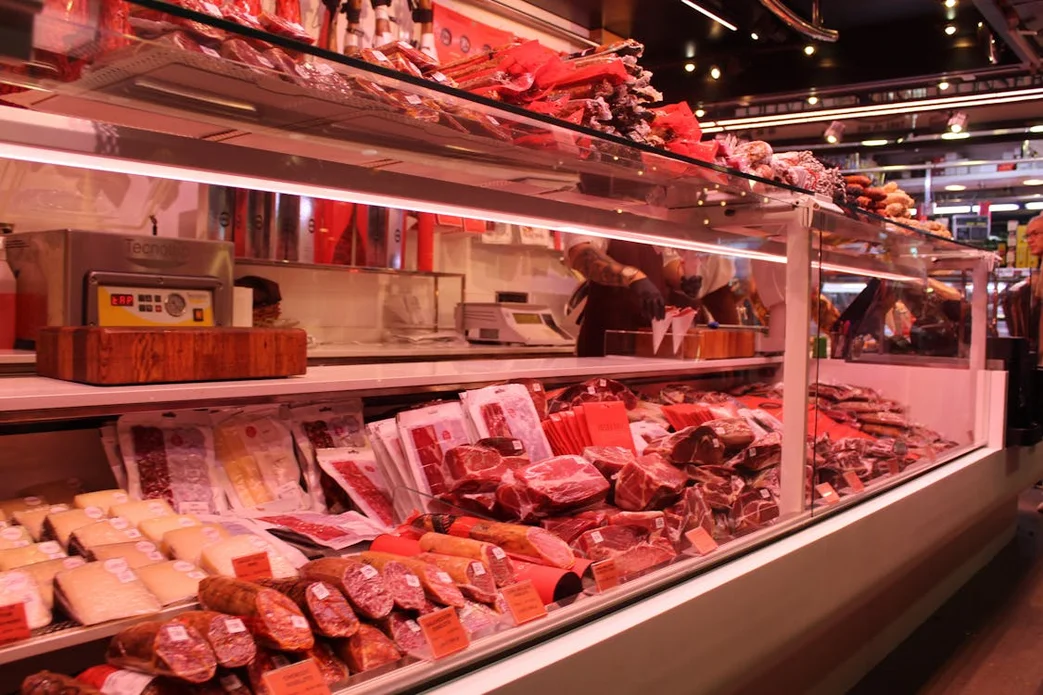
The meat counter wasn’t just a display case—it was staffed by real butchers in crisp white aprons who could tell you exactly which cut would work best for Sunday dinner. They’d wrap your selections in white paper with that distinctive waxy coating, securing everything with tape that never seemed to stick quite right. These folks knew their craft and weren’t shy about sharing cooking tips or suggesting marinades for tougher cuts. As recounted by Campbells Prime Meat, this occupation has a long and storied history before landing in grocery stores near you.
Building relationships with your butcher meant getting the best pieces set aside for you and honest advice about what was fresh that day. They’d custom-cut steaks to your preferred thickness and weren’t afraid to tell you if something wasn’t worth your money. The personal touch made grocery shopping feel more like visiting neighbors than conducting a transaction, something that’s largely disappeared in our self-service world.
3. S&H Green Stamps and Trading Stamp Books
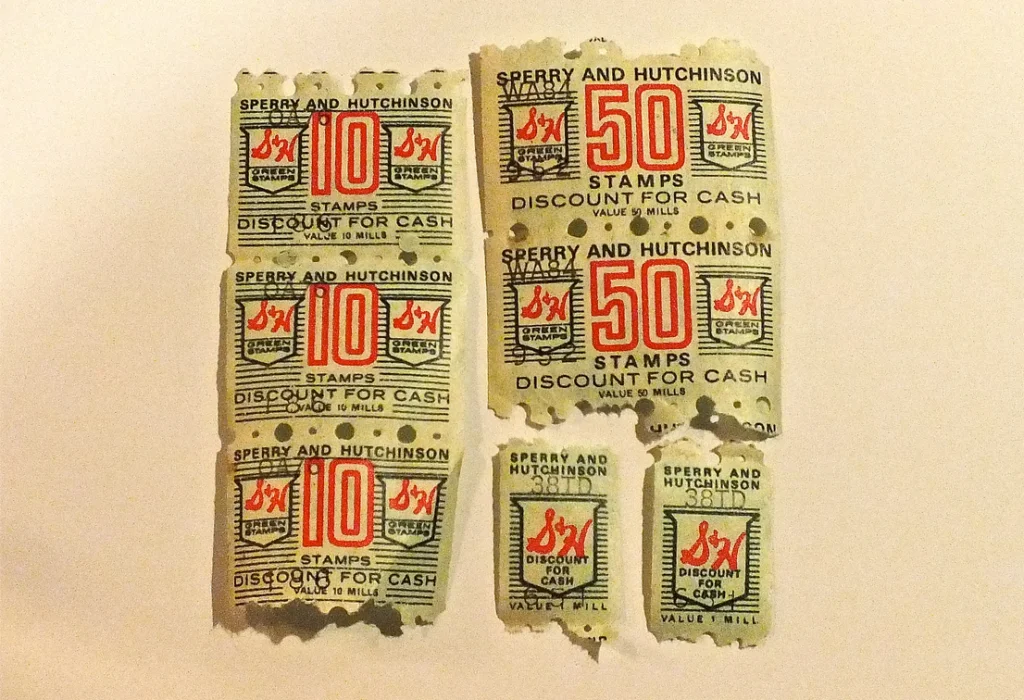
Those little green stamps turned every grocery receipt into a treasure hunt as you calculated how many books you were closer to filling. Cashiers would tear off perforated strips of stamps based on your purchase total, and you’d stuff them into your purse or wallet for the weekly ritual of licking and sticking at home. Completing a book felt like a genuine accomplishment, especially when you were saving up for something special from the catalog. The Daily Economy explores green stamps as one of various other forms of money-adjacent currencies we used to track.
The redemption centers were like mini department stores where stamps became toasters, lawn furniture, or even bicycles for the kids. Families would pool their stamps together for bigger prizes, making it a group effort that brought everyone into the savings game. The program created a sense of loyalty to certain stores and made even mundane purchases feel like progress toward something bigger and better.
4. Muzak That Actually Sounded Like Real Songs
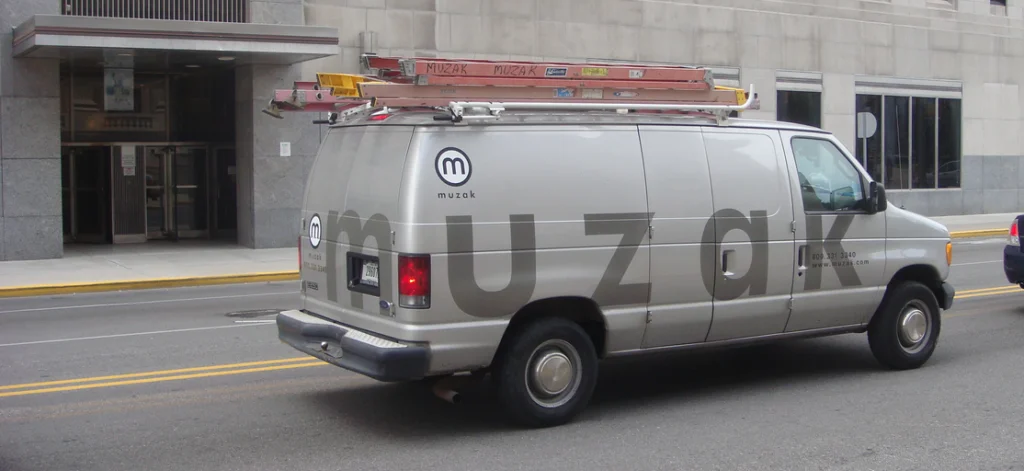
The background music in grocery stores wasn’t the generic instrumental nonsense we hear today—it was recognizable songs stripped of their vocals but still catchy enough to hum along with. You’d find yourself unconsciously swaying to an orchestral version of “Yesterday” while comparing cereal prices. The tempo was deliberately slow to encourage leisurely shopping, and somehow it worked without feeling manipulative.
These instrumental arrangements had a dreamy, almost hypnotic quality that made time seem to slow down during your shopping trip. You might catch yourself humming the melody hours later, unable to place where you’d heard it until you remembered pushing your cart through the produce section. The music created a shared soundtrack for an entire generation’s grocery shopping memories, something today’s random pop songs played at full volume can’t replicate.
5. Cart Corrals That Were Actually Just Goodwill
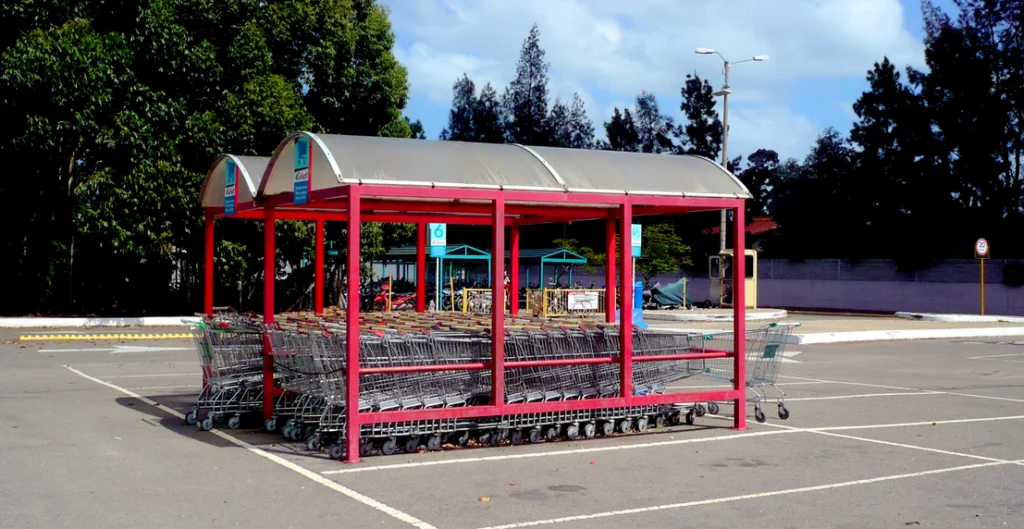
Shopping carts lived by an honor system that somehow worked better than today’s elaborate containment systems. People simply pushed their empty carts to a general area near the store entrance, trusting that others would do the same. There were no designated spaces, coin deposits, or elaborate corrals—just a loose understanding that you’d leave your cart somewhere reasonable for the next person.
The system relied entirely on basic courtesy and community responsibility, concepts that felt more solid back then. Cart attendants would periodically round up the scattered carts, but the job was manageable because most people followed the unspoken rules. It’s hard to imagine this working today, but in the ’80s, this simple approach somehow kept parking lots from becoming cart graveyards.
6. Price Guns That Made Every Employee Feel Powerful
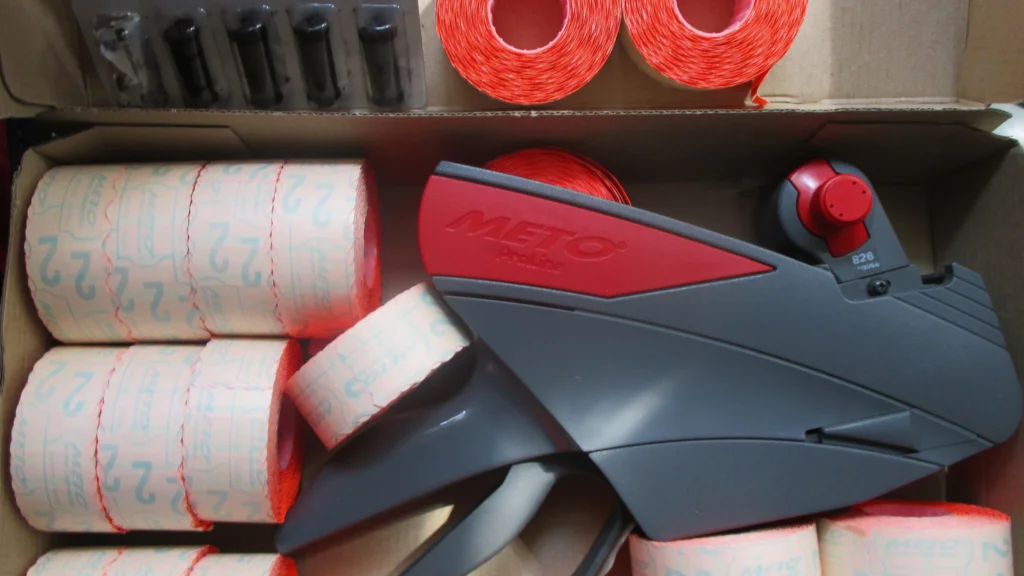
Those handheld pricing guns were the Swiss Army knives of retail, capable of marking everything from soup cans to magazine covers with satisfying precision. Each trigger pull produced a distinctive “ka-chunk” sound as the price sticker rolled out, and watching employees wield them was oddly mesmerizing. The stickers themselves were works of art—bright colors, clear numbers, and an adhesive that was strong enough to stay put but not so aggressive that it damaged packaging.
Store employees took obvious pride in their pricing gun skills, developing techniques for speed and accuracy that bordered on performance art. You’d see them rapid-fire pricing entire shelves with rhythmic precision, the gun becoming an extension of their hand. The ritual of checking prices meant hunting for those little stickers, not scanning barcodes, making shopping a more tactile and visual experience than today’s digital everything.
7. Hand-Written Rain Checks That Felt Like IOUs
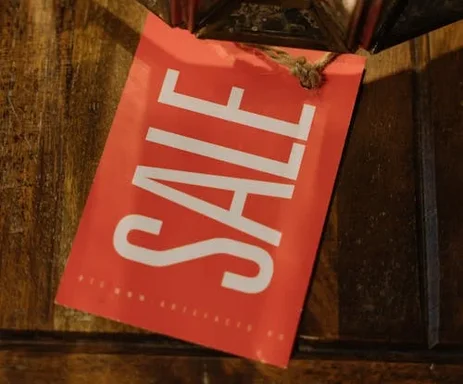
When sale items ran out, stores issued handwritten rain checks on carbon paper forms that felt more official than any printed coupon. The manager or customer service representative would carefully write out your name, the item, and the sale price in actual pen and ink. These little slips of paper carried real weight—they were personal promises between you and the store that transcended the typical commercial transaction.
People treated rain checks like valuable documents, filing them carefully in wallets or kitchen drawers until they could return to claim their bargains. The system required trust on both sides and created a relationship that extended beyond a single shopping trip. There was something deeply satisfying about presenting your rain check weeks later and getting that sale price, like cashing in a small victory against the retail system.
8. Bag Boys Who Actually Competed for Tips
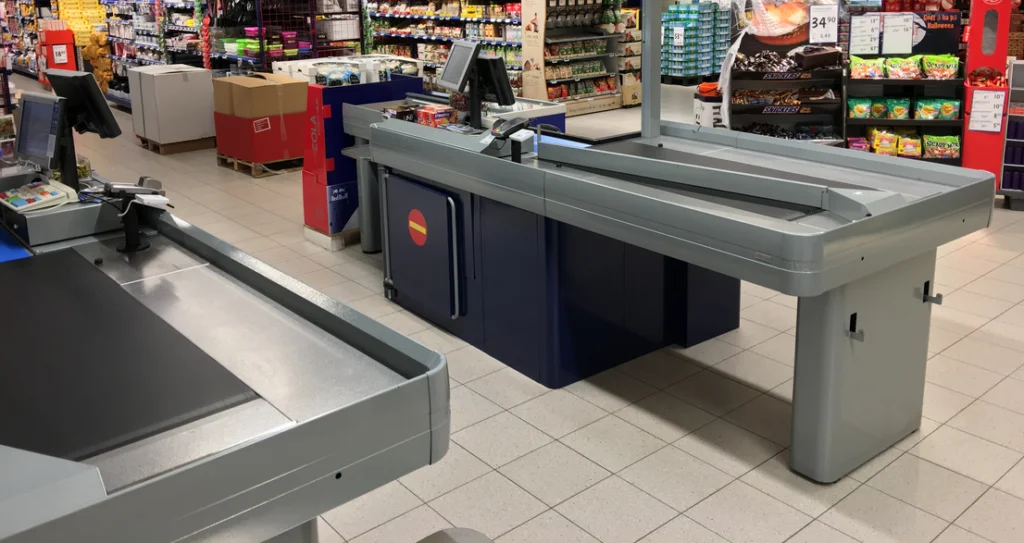
Grocery bagging was considered a skill worth developing, with young employees taking genuine pride in their Tetris-like abilities to pack efficiently without crushing the bread. The unspoken competition between bag boys led to innovations in packing technique and customer service that made checkout more than just a transaction. These weren’t just kids going through the motions—they were craftsmen working for tips and recognition.
The relationship between customers and bag boys created a social dynamic that’s completely absent from today’s self-bagging culture. Regular shoppers had favorite baggers who knew their preferences—paper or plastic, heavy items on bottom, frozen foods together. A skilled bag boy could pack a week’s worth of groceries into surprisingly few bags while keeping everything organized and protected, turning the mundane task into something approaching art.
9. Cigarette Vending Machines Right There in the Store
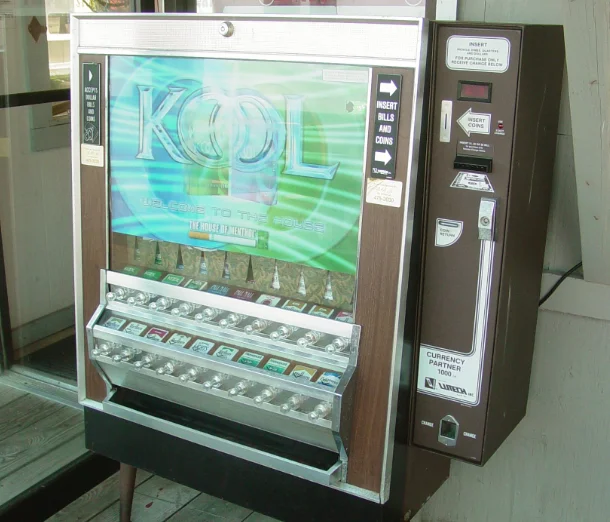
Those tall, glass-fronted cigarette machines stood guard near store entrances like metallic sentinels, offering convenience that seems almost surreal by today’s standards. You’d feed in your quarters, pull the knob for your preferred brand, and listen to the mechanical clunk as your pack dropped into the retrieval slot. The machines were built to last decades and rarely broke down, becoming permanent fixtures that everyone simply accepted as part of the shopping landscape.
The casual accessibility of these machines reflected a completely different attitude toward smoking and personal responsibility. Parents might send kids to “get cigarettes from the machine” without anyone batting an eye, a scenario that would cause absolute panic today. The machines disappeared gradually as regulations tightened, but for years they represented a kind of automated convenience that made grocery stores feel more like general stores from an earlier era.
10. Actual Deli Counters with Real Conversations
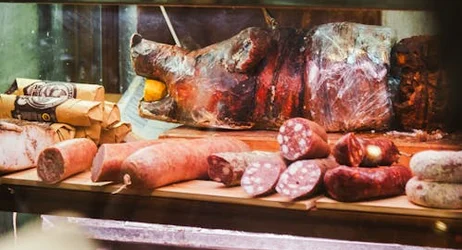
The deli counter wasn’t just about sliced meats—it was a social hub where you’d chat with the person behind the glass while they custom-sliced your order to your exact specifications. They’d offer samples of new items, remember your usual order, and weren’t shy about recommending pairings or sharing preparation tips. The interaction turned buying lunch meat into a genuine conversation about food and cooking.
Watching them work the massive slicing machines was oddly satisfying, as they’d adjust the thickness dial and feed your selection through with practiced precision. You could ask for “just a little thicker” or “more like yesterday’s batch,” and they’d accommodate without rolling their eyes. The personal attention made even a simple turkey sandwich feel special, and the relationship building turned routine shopping into something approaching neighborly friendship.
11. Double Coupon Days That Felt Like Winning the Lottery
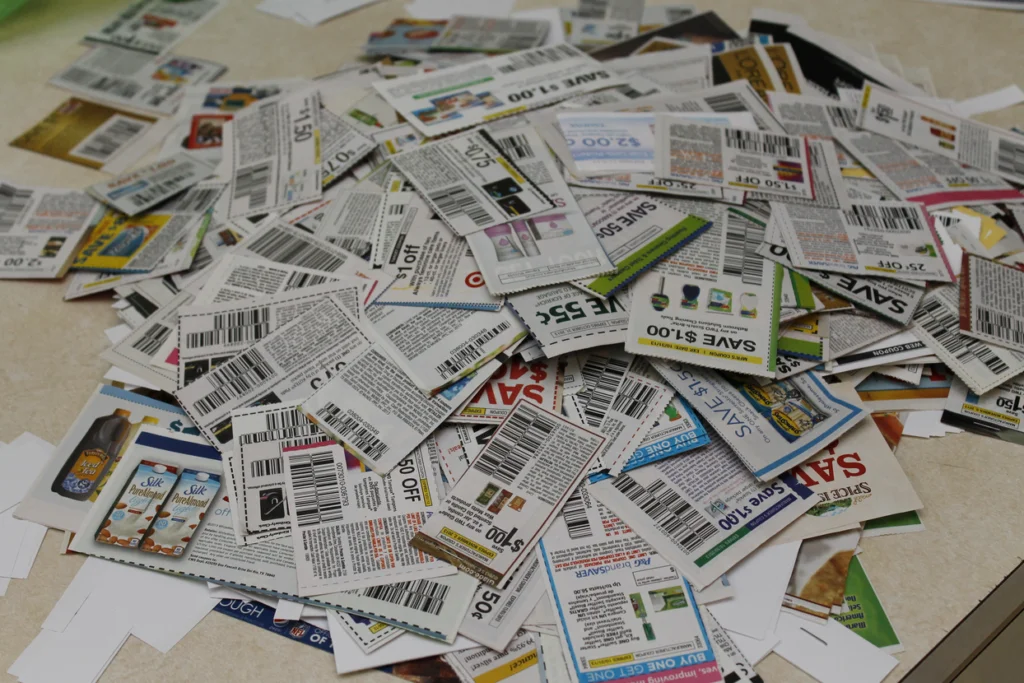
Those special promotional days when stores doubled or even tripled coupon values turned grocery shopping into a strategic game that housewives mastered like military campaigns. You’d plan your shopping list around maximizing coupon savings, sometimes walking away with cartfuls of groceries for impossibly small amounts. The math involved was complex enough to require scratch paper and careful calculation, but the payoff made it worth the effort.
The checkout process became a moment of genuine suspense as totals were calculated and recalculated with each coupon applied. Cashiers became partners in the savings game, sometimes pointing out additional discounts or helping you restructure purchases to maximize benefits. These promotional events created a sense of community among savvy shoppers who’d share tips and strategies, turning frugality into a shared adventure rather than a source of embarrassment.
12. Paper Bags That Could Actually Hold Things

Those brown paper grocery bags were engineered for durability, with reinforced bottoms and sides that could handle a week’s worth of shopping without catastrophic failure. The bags had personality—they’d develop character creases and slight tears that somehow made them stronger rather than weaker. Kids fought over who got to carry the lightest bag, and the paper was thick enough that the bags often found second lives as book covers or craft projects.
The ritual of loading paper bags in your car required strategy and spatial awareness that plastic bags simply can’t match. You’d nestle them carefully in your trunk or back seat, making sure nothing would tip over during the drive home. The environmental impact felt negligible because the bags decomposed quickly and had so many reuse possibilities, from kitchen garbage containers to gift wrapping for odd-shaped presents.
Those were the days when grocery shopping felt like a weekly adventure rather than a chore to rush through. The personal connections, small rituals, and attention to detail created an experience that was richer and more memorable than anything we find in today’s efficient but sterile supermarkets. While we’ve gained convenience and speed, something essential about community and craftsmanship got lost along the way, leaving us with memories of a time when even buying groceries felt a little more human.


